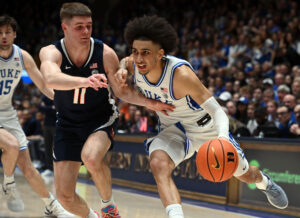Earlier this week, MLB commissioner Rob Manfred suggested that the designated hitter could be coming to the National League sooner rather than later. The remark motivated many local beat writers, national columnists, and bloggers to voice their viewpoint on the matter. In my mind, there is no question that it is time to bring the designated hitter to the National League.
A fellow LWOS writer, Jarrett Middleton, was one blogger who wrote such an article this week, in which he cited tradition, team strategy, and the serendipity of watching a pitcher slug one over the fence as reasons to keep the designated hitter out of the National League. Middleton went on to say that the only acceptable rationale for integrating the designated hitter into the National League is to deter the occurrence of pitcher injuries while hitting or running the bases.
Middleton’s notion that the much allure of baseball derives from its tradition is not wrong, but part of the reason that the game has been America’s pastime is also because the sport ignites argument between traditional thinkers and forward-thinking perspectives. Sabermetrics, racial barriers, market inequality, night games, labor disputes, and performance enhancing drugs have all been lightning rods for argument within the baseball community throughout the sport’s history. In many of those cases, tradition has been detrimental to baseball’s growth as a sport.
Enough with the history lesson. Let’s talk about the reasons the National League should adopt the designated hitter.
- Prolong Major League hitter careers
- Frank Thomas, David Ortiz, Jim Thome, Reggie Jackson, and Victor Martinez were all able to extend their careers in the American League because of the designated hitter after they were no longer able to regularly field a position.
- Why should aging players who can still hit be practically inaccessible to National League organizations?
- Remove a near automatic out for National League games. Pitchers collectively hit .131/.158/.168 with a 37.7 % strikeout rate in 2015. National League organizations are not going to spend any time now or in the future developing pitchers to hit.
- Eliminate unnecessary opportunity for injury. Major League pitchers are already getting injured while pitching at historic rates, so why not mitigate potential exposures to injury by placing a professional batter in the box. For example in 2015:
- Resting star players from the field does not preclude them from getting four plate appearances. Players like Buster Posey, Jonathan Lucroy, David Wright, Jayson Werth, and Kyle Schwarber would all be able to do what they do best if the designated hitter was an option for National League managers. Keeping them in the game as a designated hitter is better for the player, the team, and the fans long term.
- No more sacrifice bunts. For the casual fan, watching a pitcher try to lay down a bunt to move a runner to second because they are a liability at the plate is a major turnoff. Traditionalists will say that sac bunting with pitchers is critical to National League strategy. Wouldn’t the thinking behind getting a .300/.385/.500 hitter be superior to pitching to a bunting pitcher? Wouldn’t it also be more enjoyable for fans?
- Less need to trade prospects who are blocked by stars. Several years ago, former first round pick Yonder Alonso was blocked by Reds first baseman Joey Votto. The Reds attempted to play Alonso at third base and left field. The experiment was quickly nixed and Alonso was traded to San Diego that winter. Kyle Schwarber is currently a player without a natural major league position and will be subject to trade rumors as a result because there is no place for him in the field. With a designated hitter in the National League, Schwarber would never be without a role or spot in the lineup.
- Increases the active Major League roster from 25 to 26. This means more major league jobs for hitters, which will be a significant issue for the next collective bargaining agreement.
Its time to move for the National League to join the modern age of baseball. Its time to bring the designated hitter to the older of the two leagues. It may upset some fans, but it is a necessary move.
Main Photo:





